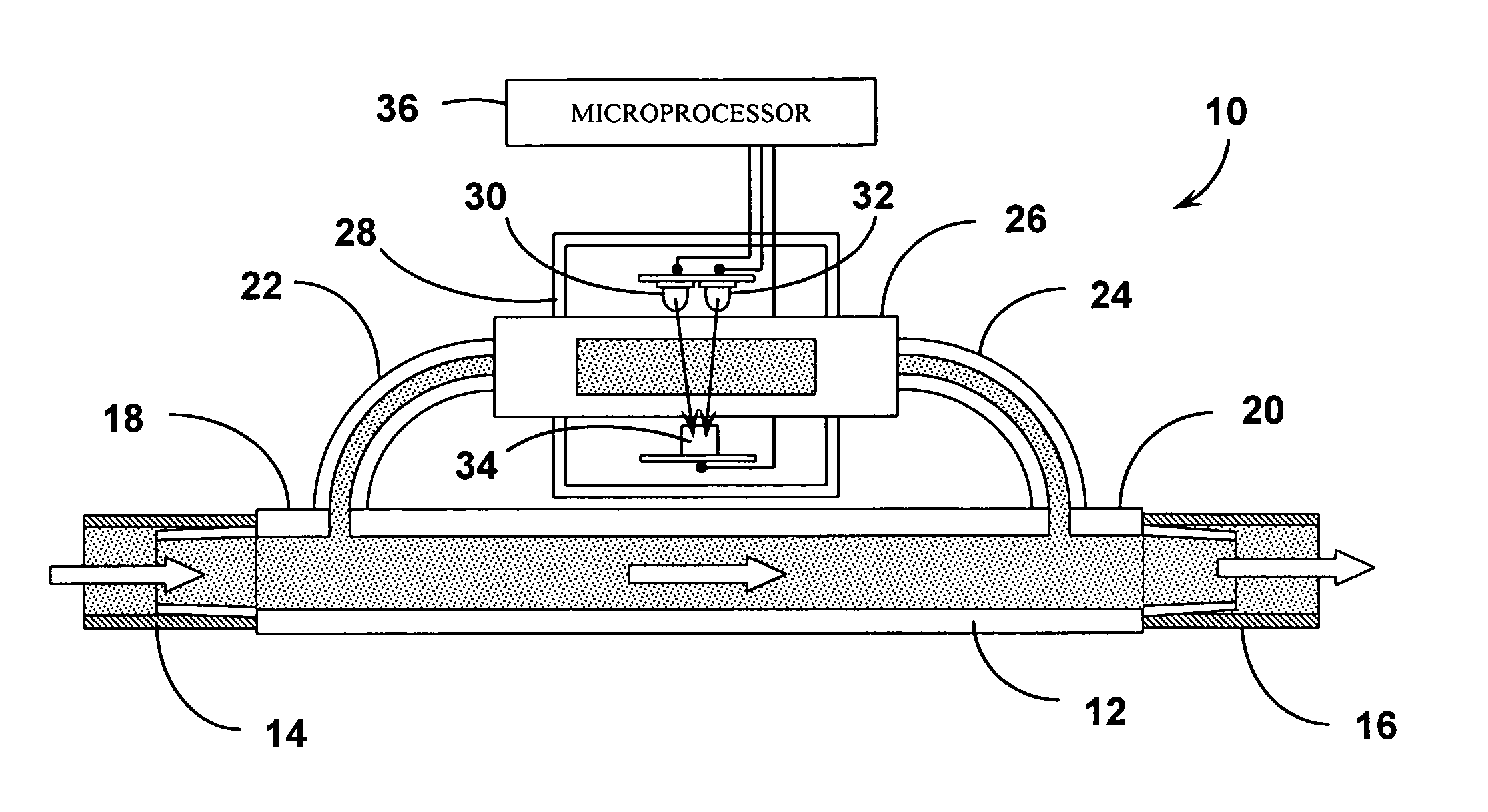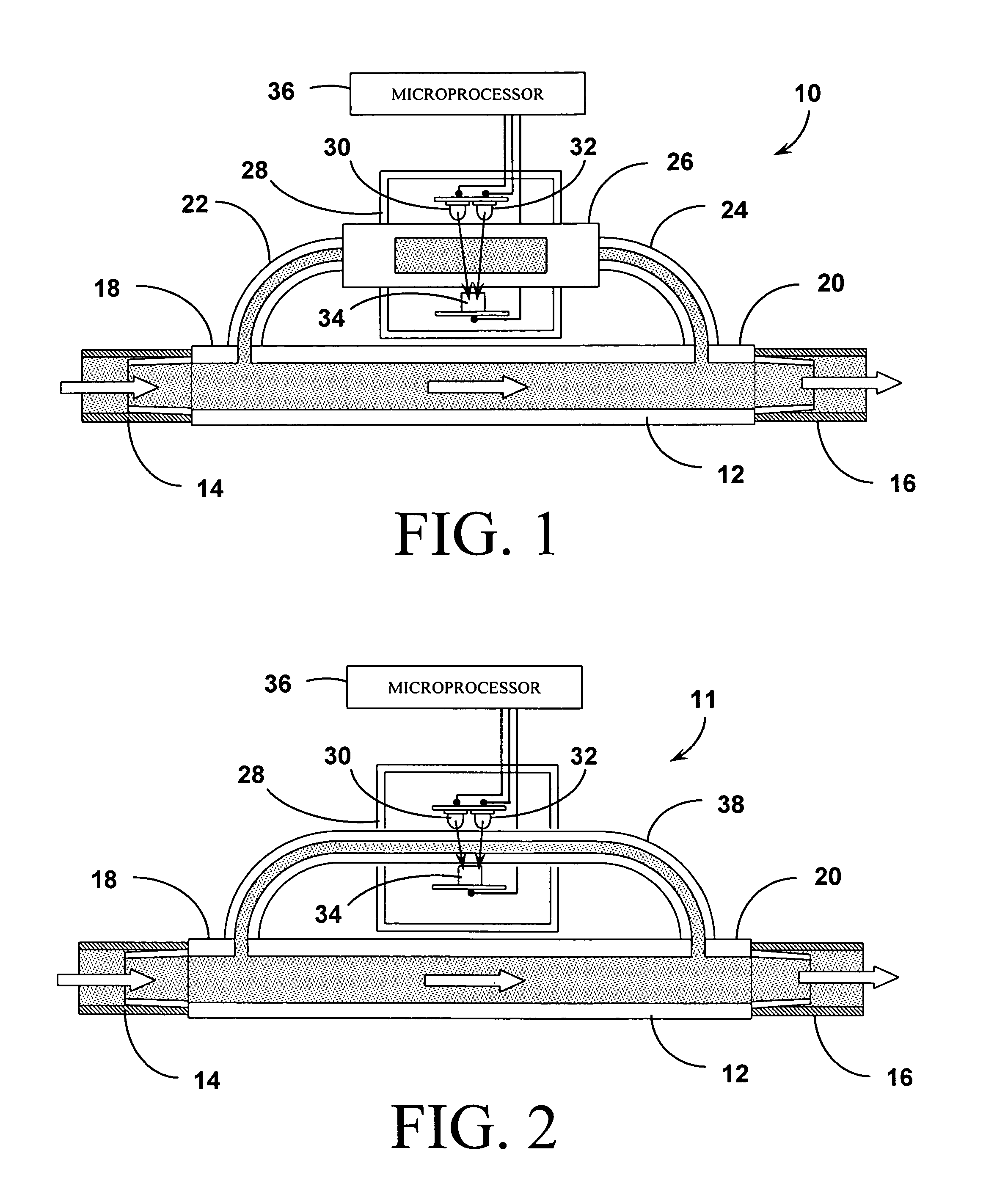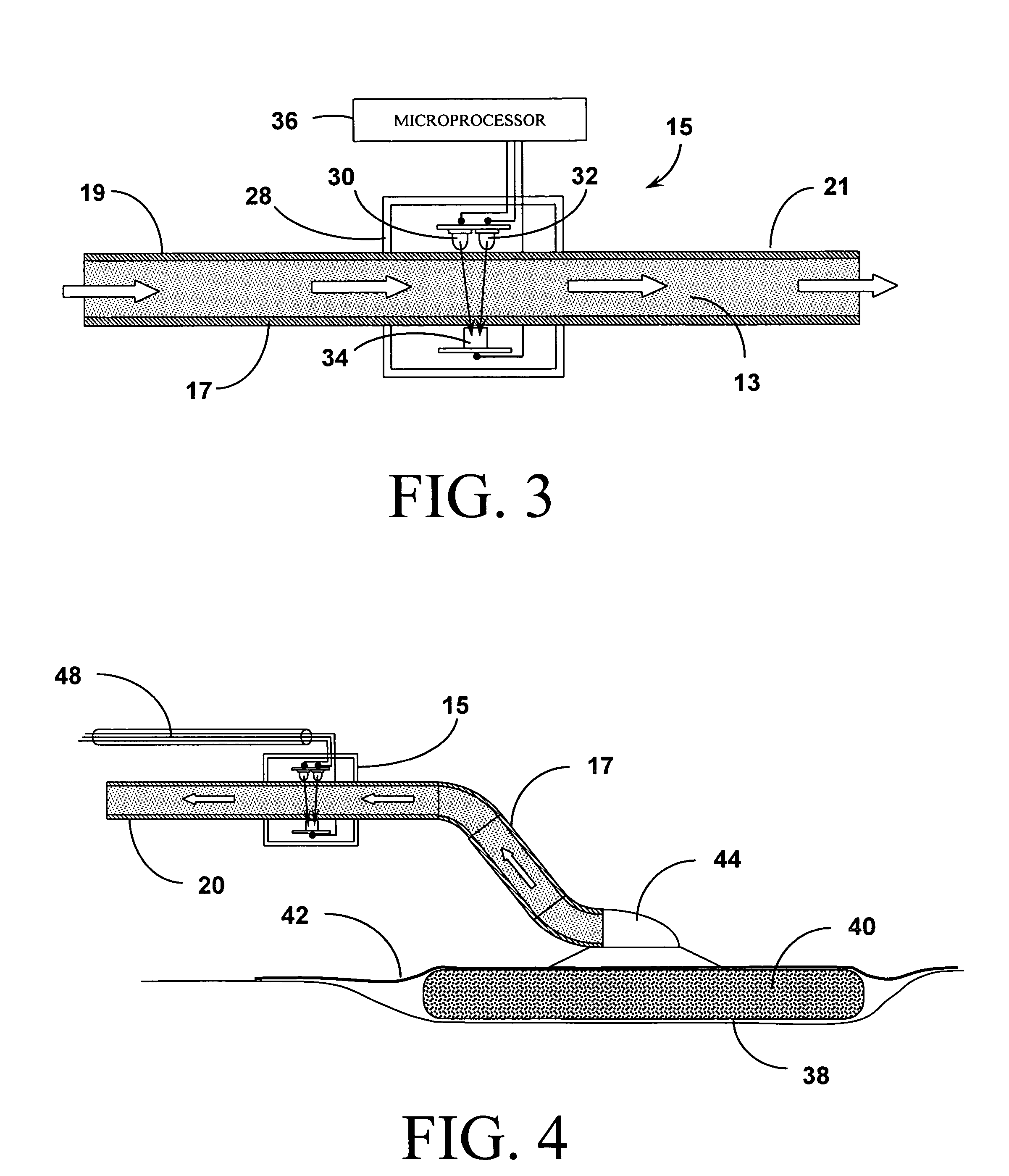Systems and methods for detection of wound fluid blood and application of phototherapy in conjunction with reduced pressure wound treatment system
a wound fluid and detection system technology, applied in the field of wound fluid detection devices, can solve the problems of reducing oxygen and nutrients, affecting the healing process, and affecting the healing process, and achieve the effect of reducing the pressure of wound treatment and increasing the level of blood presen
- Summary
- Abstract
- Description
- Claims
- Application Information
AI Technical Summary
Benefits of technology
Problems solved by technology
Method used
Image
Examples
Embodiment Construction
[0042]Although those of ordinary skill in the art will readily recognize many alternative embodiments, especially in light of the illustrations provided herein, this detailed description is exemplary of the preferred embodiment of the present invention, the scope of which is limited only by the claims which may be drawn hereto.
[0043]The systems and methods of the present invention as shown in the attached figures employ photometric or optical methods for detecting the presence (and ultimately, the concentration) of blood in wound fluid being drawn away from the wound by Reduced Pressure Wound Treatment (RPWT) devices and systems. In general, LEDs in the 540 / 560 / 580 / 620 / 640 / 660 nm and 800 nm ranges are used as the emitters and a photo detector sensitive to the same range of wavelengths is used as the receptor. These solid state optical components are positioned across a flow stream of the wound fluid and measurements are taken of the absorption of the illuminating light in a manner t...
PUM
 Login to View More
Login to View More Abstract
Description
Claims
Application Information
 Login to View More
Login to View More - R&D
- Intellectual Property
- Life Sciences
- Materials
- Tech Scout
- Unparalleled Data Quality
- Higher Quality Content
- 60% Fewer Hallucinations
Browse by: Latest US Patents, China's latest patents, Technical Efficacy Thesaurus, Application Domain, Technology Topic, Popular Technical Reports.
© 2025 PatSnap. All rights reserved.Legal|Privacy policy|Modern Slavery Act Transparency Statement|Sitemap|About US| Contact US: help@patsnap.com



